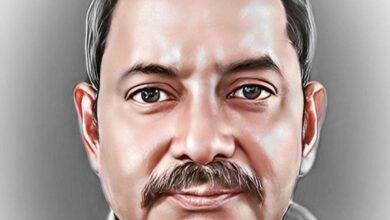Sheikh Hasina’s rule in Bangladesh: A Tale of governance, corruption, and revolution
By Doruvu Paul Jagan Babu : Bureau Chief

Sheikh Hasina’s tenure as the Prime Minister of Bangladesh, which spanned over sixteen years, has been a period marked by both significant achievements and grave controversies. Her leadership saw notable economic growth but was also marred by allegations of corruption and widespread suppression of dissent. The recent student-led revolution and public unrest have highlighted the growing discontent with her autocratic regime.

Hasina’s governance: Achievements and challenges
Sheikh Hasina, who survived a tumultuous period in 1975 and spent six years in India, returned to Bangladesh in 1981. Her journey since then has been fraught with both triumphs and trials, including 19 assassination attempts. Despite these challenges, Hasina’s administration chose a secular path and fostered robust relations with both India and China. Under her rule, Bangladesh experienced a remarkable increase in per capita income, growing to become the second-largest economy in South Asia.
Economic growth amid corruption
During Hasina’s tenure, Bangladesh saw an impressive rise in per capita income. However, the benefits of economic growth were overshadowed by rampant corruption and neoliberal policies that exacerbated economic disparities. Scandals became commonplace, unemployment soared, and inflation reached 10%. The lives of ordinary citizens were increasingly strained as corruption permeated various sectors, including the police and military. The suppression of democratic processes, including the stifling of free expression, media, and opposition, further compounded the nation’s problems.
Public dissent and student revolt
The growing dissatisfaction with Hasina’s regime culminated in a student-led revolution. Triggered by controversial policies and the suppression of dissent, students and the public expressed their anger through widespread protests. In January of this year, the Awami League, Hasina’s party, won the elections for the fourth consecutive time, but voter turnout was only 41%, and the opposition boycotted the polls. Approximately 10,000 opposition activists were jailed, and opposition leader Khaleda Zia has been under house arrest for 17 years.
The unrest intensified following the High Court’s verdict on government job reservations for freedom fighters’ families. Despite the Supreme Court’s reduction of the reservation to 5%, protests continued unabated. The situation escalated into violent clashes, resulting in over 300 deaths, more than 1,000 injuries, and significant property damage.
The fall and aftermath
The escalating violence and public anger eventually led to Hasina’s resignation. Under intense pressure and facing a deteriorating situation, she fled the country in disgrace within 45 minutes. The unrest underscores the potential consequences of ruling with an iron fist and disregarding public sentiment.
Implications for Bangladesh and beyond
Bangladesh has a history of military coups, with 29 recorded to date. The recent developments under Hasina’s rule suggest that public dissatisfaction can lead to significant upheavals. Analysts believe that the unrest in Bangladesh might have implications for neighbouring India, given the regional interconnectedness and shared political dynamics.

Sheikh Hasina’s rule in Bangladesh presents a complex narrative of economic progress overshadowed by corruption and authoritarian practices. The recent student-led revolution and public backlash highlight the volatility of governance when leaders fail to address the grievances of their people. As Bangladesh navigates its future, the lessons from Hasina’s tenure will likely resonate across the region.








